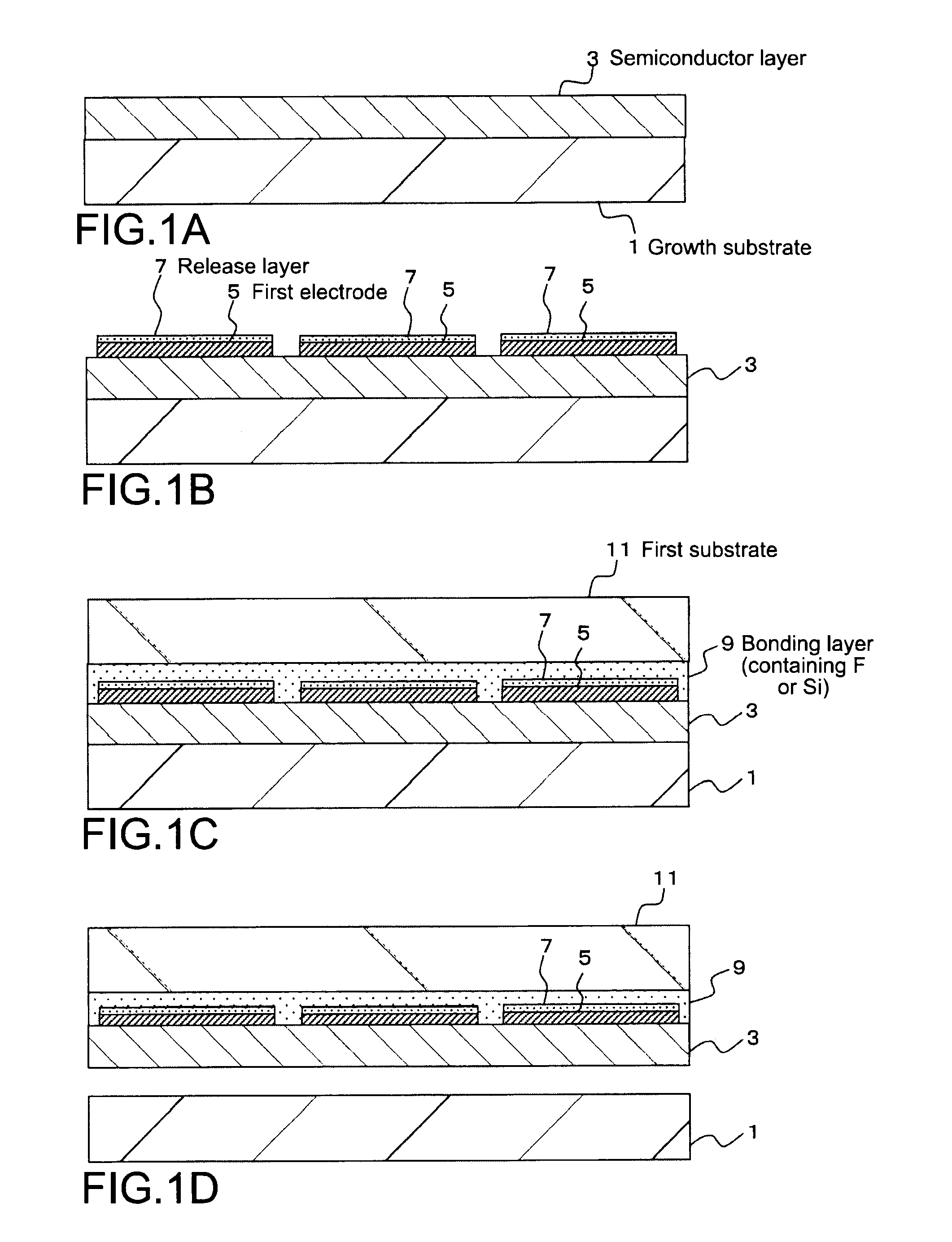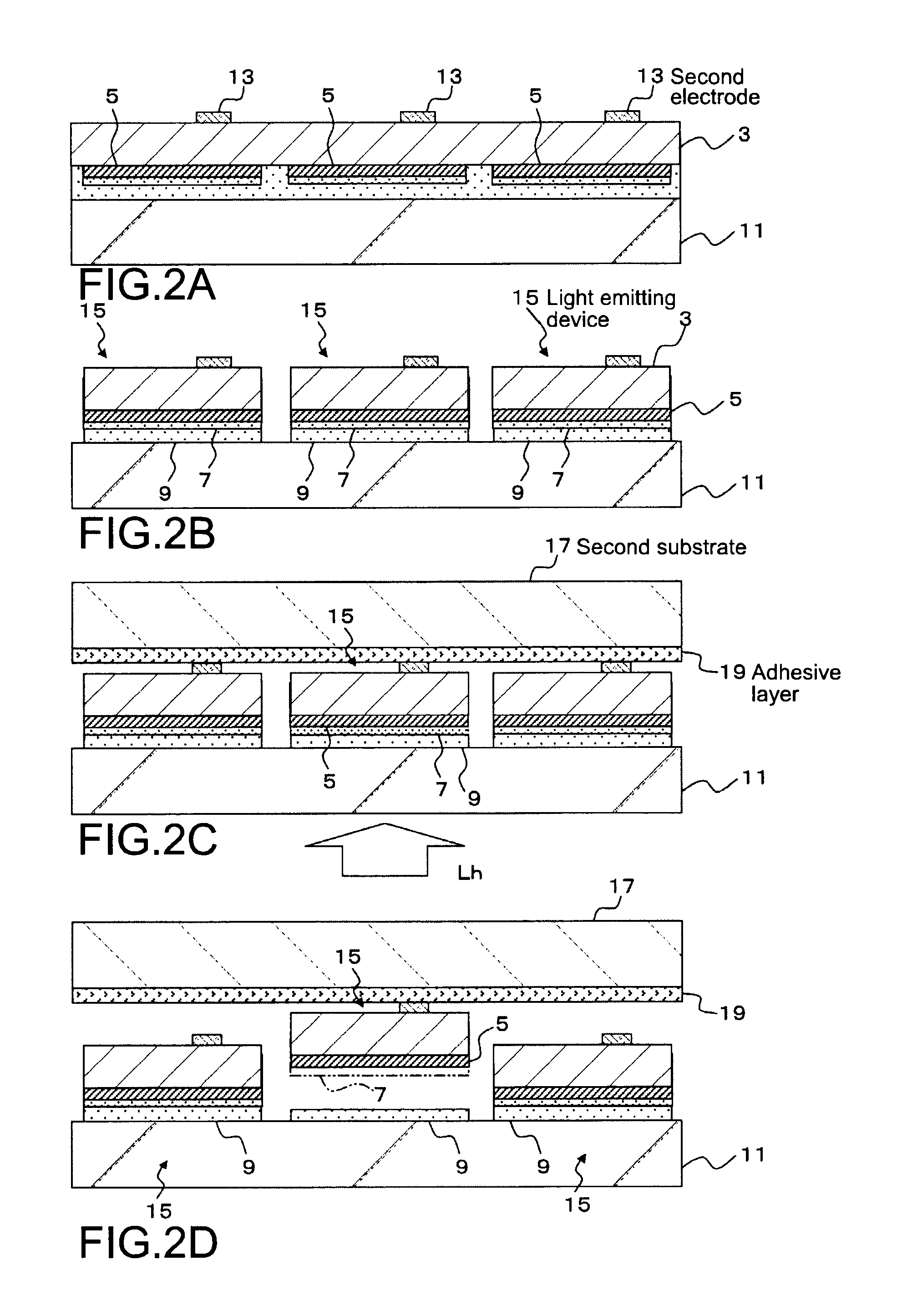Method of transferring a device and method of manufacturing a display apparatus
a technology of transfer device and manufacturing method, which is applied in the direction of electrical apparatus, chemistry apparatus and processes, semiconductor devices, etc., can solve the problems of difficult to design a material with a sufficient bonding force, narrow laser energy transfer range, and low degree of flexibility in selecting light absorbing layer and release layer selection, etc., to achieve convenient ablation, ensure bonding property, and transfer device reliable
- Summary
- Abstract
- Description
- Claims
- Application Information
AI Technical Summary
Benefits of technology
Problems solved by technology
Method used
Image
Examples
first embodiment
1. First Embodiment
[0023]First, as shown in FIG. 1A, a semiconductor layer 3 having a layer structure is epitaxially grown on a substrate 1 for growing semiconductor crystal (hereinafter, referred to as growth substrate 1), the growth substrate 1 being made of sapphire or the like. Here, a compound semiconductor layer of a first conductivity type (for example, n-type), an active layer, and a compound semiconductor layer of a second conductivity type (for example, p-type) are first epitaxially grown by a crystal growth method such as an MO-CVD method in the stated order, to thereby form the semiconductor layer 3.
[0024]Next, as shown in FIG. 1B, first electrodes 5 and release layers 7 are formed and arranged on the semiconductor layer 3.
[0025]Each of the first electrodes 5 is a second conductivity type electrode (for example, p-electrode) and is formed to have a layer structure in which platinum (Pt) and gold (Au) are laminated on nickel (Ni). Further, in a case where the first electr...
second embodiment
2. Second Embodiment
[0055]A second embodiment shown in FIGS. 5 and 6 is different from the first embodiment in the manufacturing procedure up to the process of laminating and arranging in the stated order the release layers 7 and the light emitting devices 15 on the first substrate 11 having light transmitting property, via the bonding layer 9 having light transmitting property. The processes subsequent to that process are the same as those in the first embodiment. Hereinafter, the manufacturing procedure of the second embodiment will be described with reference to FIGS. 5 and 6. It should be noted that descriptions overlapping with the first embodiment will be omitted.
[0056]First, as shown in FIG. 5A, the compound semiconductor layer of the first conductivity type (for example, n-type), the active layer, and the compound semiconductor layer of the second conductivity type (for example, p-type) are epitaxially grown in the stated order on the growth substrate 1 for growing semicondu...
PUM
 Login to View More
Login to View More Abstract
Description
Claims
Application Information
 Login to View More
Login to View More - R&D
- Intellectual Property
- Life Sciences
- Materials
- Tech Scout
- Unparalleled Data Quality
- Higher Quality Content
- 60% Fewer Hallucinations
Browse by: Latest US Patents, China's latest patents, Technical Efficacy Thesaurus, Application Domain, Technology Topic, Popular Technical Reports.
© 2025 PatSnap. All rights reserved.Legal|Privacy policy|Modern Slavery Act Transparency Statement|Sitemap|About US| Contact US: help@patsnap.com



